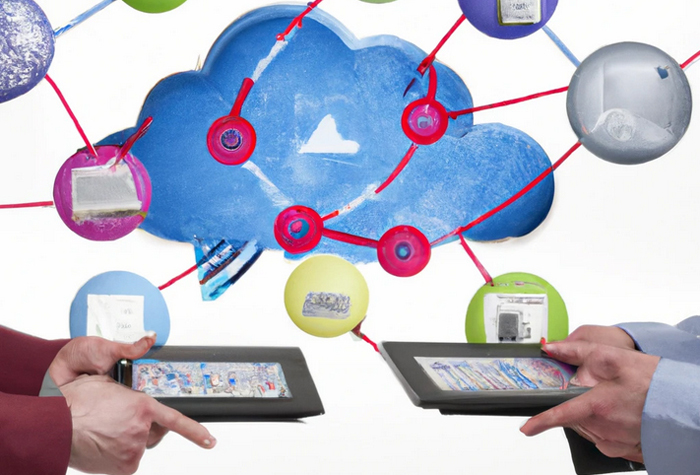Industrial software is supposed to support work steps or entire processes in industry, automate them and make them more efficient. How this was done by the software providers and their developers was of little interest to industry in recent decades. Which algorithms were used, which programming language was used, even whether the solution came from the cloud or ran on the company’s own server, was almost secondary for the users. That is now changing.
Information technology has taken such a big step forward that the technology itself – at least temporarily – is becoming the center of attention. This is referred to as container technology. Instead of developing software for an operating system or a cloud platform, solutions can now be encapsulated together with runtime libraries and data in such a way that they can run almost anywhere in an unimaginably short time – at least for the software systems that were common in the past. Instead of in one or in one and a half years, now in days or weeks. However, this speed and the ease with which it can be ported are just two of a whole series of reasons why the technology is currently coming to the fore.

Graphic generated with Open AI Software Dall-E 2 for the collaboration of monolithic and container software.
- Containers are cloud-native software. They bring with them all the characteristics we have come to know and love from the Internet and the cloud. They are easily accessible via an application programming interface (API) and can exchange data and communicate with other apps and systems via their API.
- Development, testing and operations are governed by the rules of the DevOps approach: a highly automatable process that leads to runnable solutions and their deployment in no time at all, neither forcing other software to stand still nor requiring elaborate test environments.
- Containers are automatically scaling apps that deliver exactly the performance that is needed at the time. And that is all they are paid for.
- No higher-level system needs to be shut down for updates or program changes. There is no higher-level system at all. The software is activated automatically when the update is finished.
- Re-use of software modules is a central principle of container technology.
What’s the problem? Why haven’t all IT decision-makers jumped on this technology long ago? Because it does indeed require a fundamentally different infrastructure in the company. Because developers have to learn how to use it and change the way they work as software developers. Because the new possibilities are so far-reaching that they also affect the organization of the company.
Interaction of old and new, monolithic and composable
Container technology in the form of composable software can also be purchased or simply used in addition, but a company must consciously tackle a conversion of its corporate IT. With people in charge and full-time jobs that may not currently exist. This indeed costs time and money, but this investment is more worthwhile than is apparent at first glance.
A container app is incredibly flexible and versatile not only in terms of its runnability but also in terms of its functionality and usability. Its cloud properties, moreover, predestine it to function as a web-based service according to the pay-per-use business model. And their flexibility in interaction with other apps and systems makes many application possibilities conceivable that were previously completely ruled out – i.e., based on monolithic systems connected via interfaces. For example, using an app to analyze and compare data from different applications that were not even known when the app was developed.
The last point concerns a very central issue of IT in industry: the possibility of combining old and new, and thus the security of not having to throw away investments made in the past.
The special thing about industrial software up to now has been the large number of very specialized solutions, all of which are used monolithically, i.e., self-contained, and still do a very good job. No technological progress could take hold here that would abolish and replace these IT landscapes. It is imperative that they continue to serve their purpose. Of course, it would be even better if they could fulfill their purpose even better.
And that is possible via container technology with new cloud services. The only prerequisite is that the old systems must have a well-documented API. In fact, this is now being demanded from the providers of the systems implemented to date. More and more loudly. Those who do not comply or try to put the brakes on here could get into trouble themselves.
